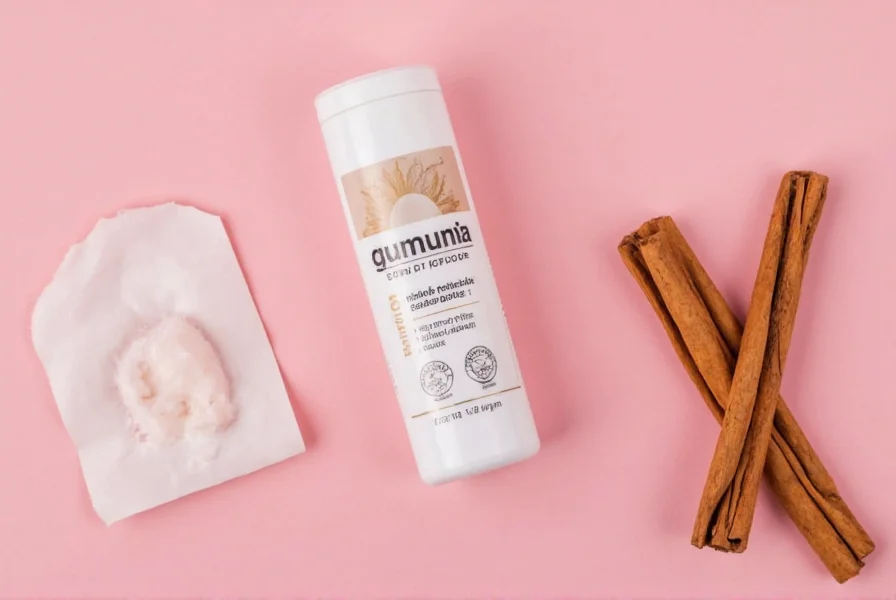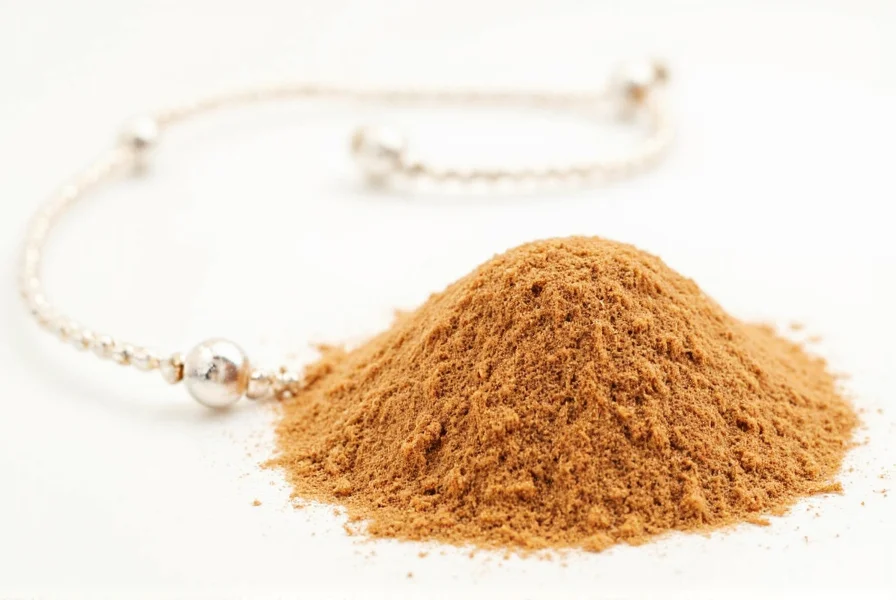Cinnamon gum is a sugar-free chewing gum flavored with natural or artificial cinnamon extracts, primarily used for freshening breath and providing a spicy-sweet flavor experience. Unlike regular gum, it often contains cinnamaldehyde (the compound giving cinnamon its distinctive taste) and may offer mild oral health benefits due to cinnamon's natural antimicrobial properties. Most commercial cinnamon gums are sugar-free, using sweeteners like xylitol that help prevent tooth decay.
Chewing cinnamon gum provides a distinctive spicy flavor that evolves from intense heat to sweet warmth as you chew. This unique sensory experience makes it a popular choice for those seeking alternatives to mint-flavored products. The active compound cinnamaldehyde, which constitutes 60-90% of cinnamon bark oil, creates the characteristic burning sensation that gradually mellows into sweetness.
What Makes Cinnamon Gum Different?
Unlike traditional mint gums, cinnamon gum delivers a complex flavor profile with three distinct phases: an initial spicy heat, followed by warming sensation, and finally a sweet finish. This progression occurs because cinnamaldehyde interacts with TRPA1 receptors in your mouth, creating that signature tingling sensation that dissipates as you continue chewing.

Oral Health Considerations
Research suggests cinnamon gum may offer modest oral health advantages. A Journal of Agricultural and Food Chemistry study found cinnamon extracts demonstrate antimicrobial activity against common oral bacteria like Streptococcus mutans. However, these benefits depend on sufficient concentration of active compounds. Most commercial cinnamon gums contain only trace amounts of actual cinnamon oil, primarily using artificial flavorings for cost and consistency.
| Component | Natural Cinnamon Gum | Artificial Cinnamon Gum |
|---|---|---|
| Primary Flavor Source | Cinnamaldehyde from cinnamon bark | Synthetic cinnamaldehyde |
| Antimicrobial Properties | Moderate to high | Minimal to none |
| Flavor Duration | 15-25 minutes | 10-20 minutes |
| Common Sweeteners | Xylitol, sorbitol | Sorbitol, aspartame |
Blood Sugar and Metabolic Effects
Many people wonder about cinnamon gum blood sugar effects. While whole cinnamon has been studied for potential blood sugar regulation, the minuscule amounts in gum make significant metabolic impact unlikely. A comprehensive review in Nutrition Reviews concluded that typical cinnamon gum consumption delivers less than 1% of the cinnamon dosage used in blood sugar studies. The xylitol content (common in sugar-free varieties) has minimal effect on glucose levels, making it suitable for most people monitoring blood sugar.
Dental Benefits of Sugar-Free Cinnamon Gum
The real dental advantage comes from being sugar-free rather than the cinnamon flavor itself. Chewing any sugar-free gum stimulates saliva production, which helps neutralize acids and wash away food particles. When cinnamon gum contains xylitol (check ingredient lists), it provides additional protection as xylitol inhibits bacterial growth. Dentists generally recommend chewing sugar-free gum for 20 minutes after meals to support oral health, regardless of flavor.

Potential Sensitivities and Considerations
Cinnamon gum isn't suitable for everyone. Some individuals experience oral irritation from cinnamaldehyde, particularly those with existing mouth sores or sensitive oral tissues. The American Contact Dermatitis Society lists cinnamaldehyde as a common allergen that can cause stomatitis (mouth inflammation) in susceptible people. If you notice burning sensations that persist after spitting out the gum, discontinue use. People with canker sores may find cinnamon gum exacerbates discomfort due to its irritating properties.
Choosing Quality Cinnamon Gum Products
When selecting cinnamon gum, check the ingredient list for actual cinnamon components rather than just 'artificial flavor.' Products listing 'cinnamaldehyde' or 'cinnamon oil' among the first ingredients typically deliver stronger flavor and potential benefits. Look for the American Dental Association seal for products containing xylitol, which indicates they meet standards for promoting oral health. Avoid gums with added sugars, as these counteract potential dental benefits.
Practical Uses Beyond Breath Freshening
Beyond its primary function as a breath freshener, many find cinnamon gum useful in specific situations. The distinctive flavor makes it an effective alertness aid during long drives or study sessions, as the spicy sensation provides mild stimulation. Some speech professionals recommend it for voice warm-ups before presentations, as the increased saliva flow helps lubricate vocal cords. The flavor's intensity also makes it particularly effective after consuming strong-smelling foods like garlic or onions.
Does cinnamon gum actually help with bad breath?
Yes, cinnamon gum helps combat bad breath through multiple mechanisms. The chewing action stimulates saliva production, which naturally cleanses the mouth. Cinnamon's antimicrobial properties can reduce odor-causing bacteria, though effectiveness depends on the concentration of actual cinnamon compounds. Sugar-free varieties provide additional benefits as they don't feed bacteria like sugar-containing products would.
Can cinnamon gum help lower blood sugar levels?
Cinnamon gum typically contains insufficient cinnamon compounds to significantly affect blood sugar. While whole cinnamon has been studied for potential blood sugar regulation, the small amount used in gum flavoring (usually less than 0.5% of the product) delivers minimal active compounds. The xylitol in sugar-free varieties has negligible impact on glucose levels, making it suitable for people monitoring blood sugar, but don't expect therapeutic effects from regular consumption.
Why does cinnamon gum make my mouth tingle or burn?
The tingling or burning sensation comes from cinnamaldehyde, the primary compound in cinnamon. It activates TRPA1 receptors in your mouth, which are temperature and pain receptors. This creates a warming sensation that some perceive as mild burning. The intensity varies by product - natural cinnamon gums typically cause more pronounced effects than those using artificial flavoring. The sensation usually diminishes after 5-10 minutes of chewing as the receptors adapt.
Is cinnamon gum safe for dental work like braces or fillings?
Most dentists consider sugar-free cinnamon gum safe for people with braces or dental work, but with some considerations. The gum's stickiness could potentially dislodge brackets if chewed too vigorously, so moderate chewing is recommended. The acidity from prolonged chewing might affect certain types of fillings over time. If you have temporary cement or recently placed restorations, consult your dentist before chewing any gum. Sugar-free varieties are always preferable to prevent decay around braces.
How long does the flavor last in cinnamon gum compared to other flavors?
Cinnamon gum flavor typically lasts 15-25 minutes, slightly longer than many fruit flavors but generally shorter than intense mint varieties. The distinctive three-phase flavor experience (initial heat, warming sensation, then sweetness) creates the perception of longer-lasting flavor for some users. Natural cinnamon gums often maintain flavor longer than artificial versions due to the complex chemical composition of real cinnamon oil. Chewing technique also affects duration - vigorous chewing releases flavor compounds more quickly.











 浙公网安备
33010002000092号
浙公网安备
33010002000092号 浙B2-20120091-4
浙B2-20120091-4